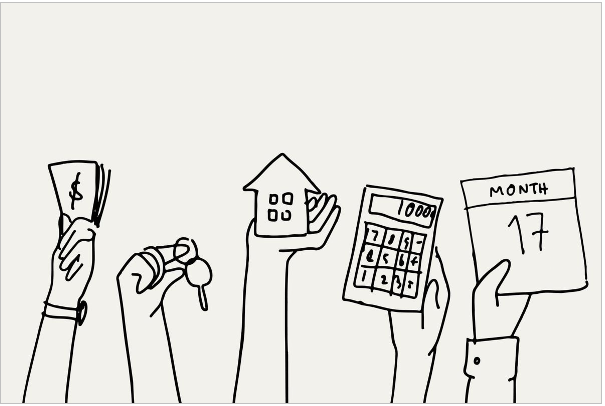Written by: Peter Minkoff
Across the US, over 35% of households rent homes, spending more money than ever before to do so. The rising inflation, a shortage in rental properties, a changing workforce, and numerous obstacles to homeownership are all significant factors that are contributing to this increase in pricing. With wages not matching the inflation and rent price rates, the future of the market might seem uncertain for renters, even though many investors feel now is a good time to buy real estate. The rental market is experiencing some uncertainty, but there are still a few notable trends that have come out of the recent fluctuations. With that in mind, here is an insightful overview of the current and future state of rentals in the United States:
Income and rent
As a general rule, households are advised not to spend over 30% of their monthly income on rent. This means that households are moderately burdened by rent and able to budget for a comfortable lifestyle. However, this goal is proving to be more and more difficult to achieve. Rent prices continue to increase each month, with the typical asking rent now surpassing 6% compared to the same time last year. While this comes as good news to investors and landlords, price increases are significantly impacting renters. A rising number of households are now “severely rent burdened”, or spending more than 50% of their income on rent. This burden disproportionately affects low-income families, seniors, and ethnic and racial minorities, potentially presenting a serious socio-economic risk.
The impact on inflation
Rent prices are impacted by inflation, but rent is a large contributor to inflation as well. In fact, rent and other indexes relating to shelter represent the biggest portion of the consumer price index (CPI), a factor in inflation. Data collected this year shows that shelter has accounted for more than 70% of the monthly rise in inflation. However, rent CPI doesn’t follow the same pace as the overall CPI, mostly due to the impact of lease renewals. As the year comes to a close and more data is collected, the impact of rent costs on the consumer price index will become clearer.

Growing rental markets
Despite challenges posed by inflation, the rental market continues to grow. Some of the strongest markets for rental investors include Los Angeles, Seattle, and Houston, the same metro areas that have been going strong for several years. However, trends might change in the near future as new promising markets begin gaining prominence. For instance, luxury apartments in Arlington represent an attractive opportunity for observant investors. As the Texas market grows and high-end apartments with excellent amenities gain popularity, these rentals show great upside potential.
A generational shift
It’s a well-known fact that baby boomers represent the largest percentage of homeowners, with millennials being the generation dominating the rental market. But this has slightly changed in recent years. With lower mortgage rates making homeownership a reality for many Millenial buyers, their share in the rental market is dropping. Now, Gen Z is the most important generation, with 74% of these young adults renting their homes. Since it’s still more affordable to rent than buy, this trend will likely continue, with single people and racial and ethnic minorities being more likely to rent as well.
Increasing competition
The low interest rates of the pandemic era created quite a lucrative opportunity for eagle-eyed rental investors. As a result, the number of rental units on the market increased, presenting more diverse options than ever before. But as the demand for rentals continues growing, competition is still fierce in the sector. Large firms continue investing in the rental property market, posing challenges to smaller investors. At the moment, the playing field is relatively level, but the tough competition might lead to noticeable changes in the future that could be reflected in any aspect from lower rent prices to market dominance; we have yet to see the full impact.
From generational shifts to financial factors, the rental market is experiencing a slow but steady evolution. While the future of the market is still unknown, particularly in terms of unit availability and the impact of inflation, one thing is for certain – finding affordable properties will be a challenge for renters as much as the competition will be for landlords.
Related: Solutions to the Housing Crisis: We All Play a Part

